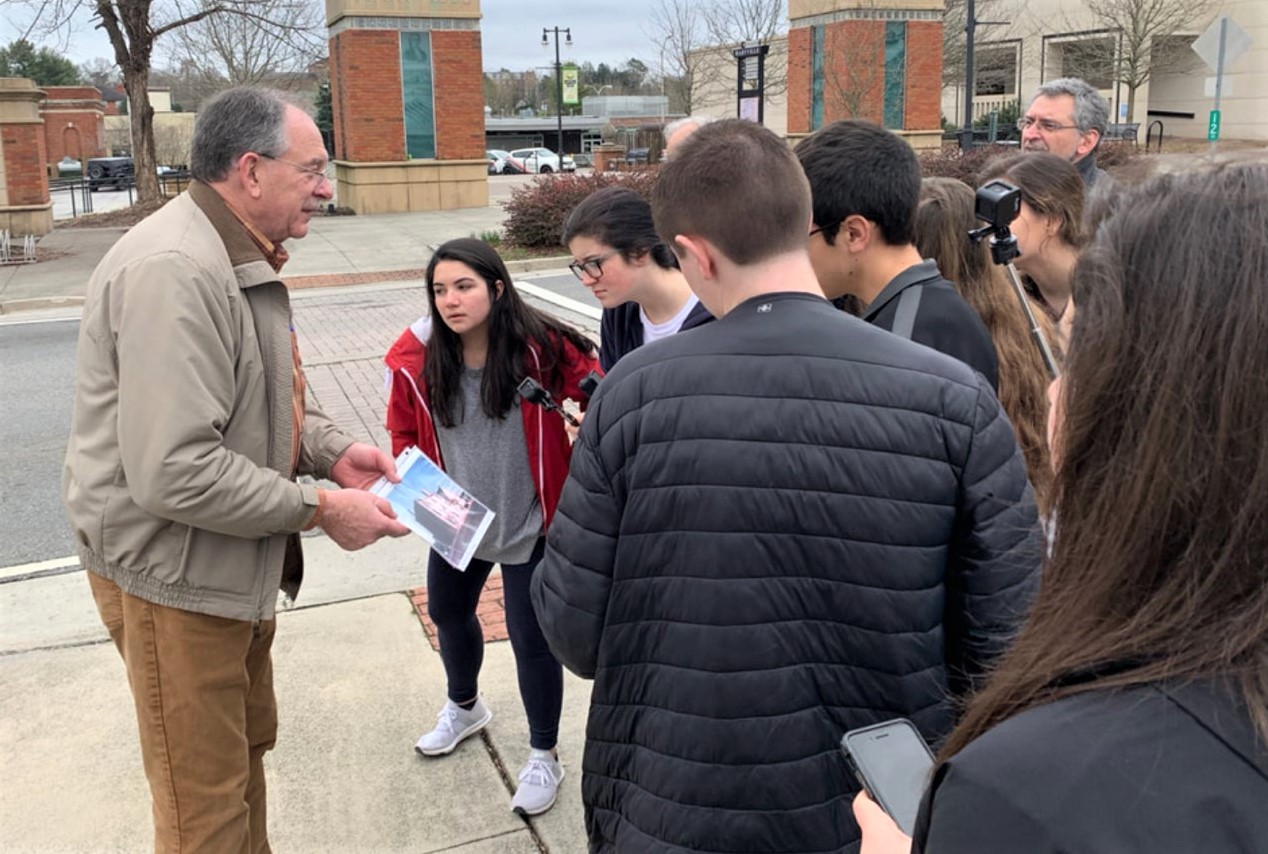Emerging Connections
Commitments for Connected STEM
Spanning Disciplines, Generations, and Anchor Institutions for Humane Science
“I wonder whether your moral and spiritual progress has been commensurate with your scientific progress.” — Martin Luther King Jr.’s “Paul’s Letter to American Christians,” delivered at Dexter Avenue Baptist Church, Montgomery, Alabama, on 4 November 1956
In response to Martin Luther King Jr.’s provocation, how do educators ensure that students’ learning about the moral imperatives of society remain in sync with understanding scientific innovation? What are new models of connected STEM that clearly value the moral and social development of young people? How do these new models create and reinforce human connection across various heterogeneities of knowledge, culture, and practice (e.g., Rosebery et al. 2010)?
In this article, I propose three major design principles—or commitments—in creating educational environments for connected STEM learning that scale across diverse student populations and bridge formal and informal learning contexts. The first principle is that a definition of connected STEM should not be limited to spanning knowledge and practices from multiple STEM disciplines or contexts, but should intentionally span humanities practices and related orientations to inquiry. Second, the design of STEM learning environments should work to span generations of learners so that problems the effort addresses are approached historically as well as innovatively. The third design consideration (related to the intergenerational nature of participating learners and teachers) is to involve and connect stakeholders and representatives from important anchor institutions revered by the community (e.g., public libraries, local colleges, the mayor’s office, public schools, places of worship). If facilitators, paraeducators, and learners cannot physically move across these institutions to do the collective work, then participants should develop lasting connections to and across these places from being a part of the work.
In summary, connected STEM in our designed learning environments should span
- STEM and humanities disciplines,
- generations of learners, and
- anchor institutions.
Enacting these commitments foregrounds and supports the ethical and moral obligations learners have to each other, to their communities, and toward larger social issues, ensuring that connected STEM works on problems that matter for people’s lives.
Examples of STEM Engagement
To support these points, I draw upon two sources of empirical material. The first source is an interview with a developmental neuroscientist working as lead scientist at a biomedical startup. The interview was part of a larger effort to understand how the work of STEM professionals is “connected,” and what connection looks like at the scale of routine professional practice in a lab. The focal scientist, Dr. Stewart, was chosen because he reported pursuing a STEM profession for moral reasons (rather than financial or other objectives): to improve people’s well-being and quality of life through therapeutic intervention.
The second empirical source is a recent community-based design study (Bang et al. 2016) I led called Off the Map that occurred in a nonmetropolitan area of the southeastern United States. The project brought together public high school students and teachers, software designers, librarians, local historians, GIS specialists, college professors, and members of the mayor’s office to create and disseminate a digital walking tour of the town’s forgotten histories. Following recommendations from Roschelle et al. (2000), Off the Map embedded the use of technology as a learning tool within a larger movement of community reform.
Looking comparatively across these two examples of STEM engagement demonstrates that connected STEM undergirds both professional practice and designed learning opportunities for young people, but more importantly foregrounds social connection and ethics in the doing of STEM. Comparing STEM professional practice to that of designed educational experiences for young people to learn STEM accomplishes two goals:
- The comparison invites a range of possible STEM endeavors into the same conversation, drawing a link between what young people are doing and what they could become, and
- Identifies similar implicit and explicit values and ethical projects across different STEM learning contexts (e.g., Hall and Stevens 1994).
Looking at professional practices helps educational designers decide which ethical orientations we hope to reproduce and those we want to newly promote for more just, morally driven STEM work. How might we better prepare young people to approach STEM professions as a way to enact their moral obligations and ambitions and what current examples do we have of those enacting ethical aims in their professional worlds?
Redefining Connected STEM to Span the Humanities
In thinking expansively about connected STEM, I found useful the notion of “integrated STEM.” Nadleson and Seifert (2017) define integrated STEM as “involv[ing] conditions that require the application of knowledge and practices from multiple STEM disciplines to learn about or solve transdisciplinary problems” (p. 221). The issue or problem guides the learning process rather than the “have a hammer, everything is a nail” approach. However, actual transdisciplinary problems—wicked, real-world problems—do not adhere to STEM boundaries either. Such problems require that we think further beyond STEM disciplines to span knowledge and practices from the humanities.
How It Looks in Professional Practice
The daily work of Stewart, lead scientist at a biomedical start-up, illustrates how knowledge and practices from STEM and the humanities are endemic to his problem-solving processes in his laboratory. With a PhD in developmental neuroscience, Stewart chose this professional path as a means of improving the overall quality of people’s lives through STEM. Therefore, he reported surprise at discovering that visual design is one of the most essential skills in his professional work, skills that he never formally learned. A typical day or week for Stewart involves communicating with investors, lawyers, and managers (all non-scientists) using scientific processes and generated data visualizations he creates. His understanding of visual design must be sophisticated enough to shift to the relative expertise of these various audience members (e.g., investors need to see the rate of growth, lawyers need to see risk, managers need to see logistics). Stewart anticipates the professional vision people bring to an interaction with a process or product (Goodwin and Goodwin 1997), using it as a resource for his visual designs. Stewart reported that using the same visualizations across these stakeholders is not an option, something he was reprimanded for early on in his tenure at the company. But with so much practice, Stewart’s elevated sense of gestalt—his perception of the overall elements working together in the design—made him the go-to person for producing or editing visualizations in the company. Stewart feels satisfaction in this role, commenting that this function in his scientific job seamlessly connects to his at-home art-making projects and practices; he paints portraits and nature scenes in his garage studio when not at work.
How We Designed for It
In Off the Map, a community-based design study, a team of educators (e.g., public high school teachers, librarians, community historians) used STEM to solve an issue that plagues most U.S. communities: histories belonging to People of Color were whitewashed or altogether buried over time (a process in which public schools have been complicit, see Taylor 2018). But if residents of a place desire to understand how their home communities developed over time, then they must learn the histories of Black, Indigenous, and other BIPOC stakeholders.
The team of educators, high school students, and representatives from the local mayor’s office designed a solution to excavate those stories: a mobile app that pinged residents or visitors with excavated stories while on the move (Marin et al. 2021). Learning and taking up practices from humanities, especially history, were critical for students to understand how the digital application should be designed and coded, and how it should function for residents/users. Further, students needed archival research and oral history interview strategies to generate the content of the mobile app. While building the technical components of the app were not trivial, the more challenging aspect of software development arose when team members had to “translate” the complexities of historical accounts to the forms familiar in mobile apps. Stories—perhaps better characterized as “yarns”—told by elders became a brief text description, one or two images, and a point on a map. Eventually, coders of the app added audio capabilities so that users could hear excerpts of elders’ stories. Students agreed, however, that the available digital modalities were a poor representation of their conversations with older folks. At times, this incommensurability demonstrated how un-practiced we are at supporting teams of learners to work across STEM and humanities disciplines (e.g., Stevens et al. 2005), or how we think of these disciplinary mismatches as opportunities for better educational designs. As the project wrapped up, it became clear to the team that the technical form beat out historical complexities, leaving most of us unsatisfied with the overall outcome of the digital, mobile app.
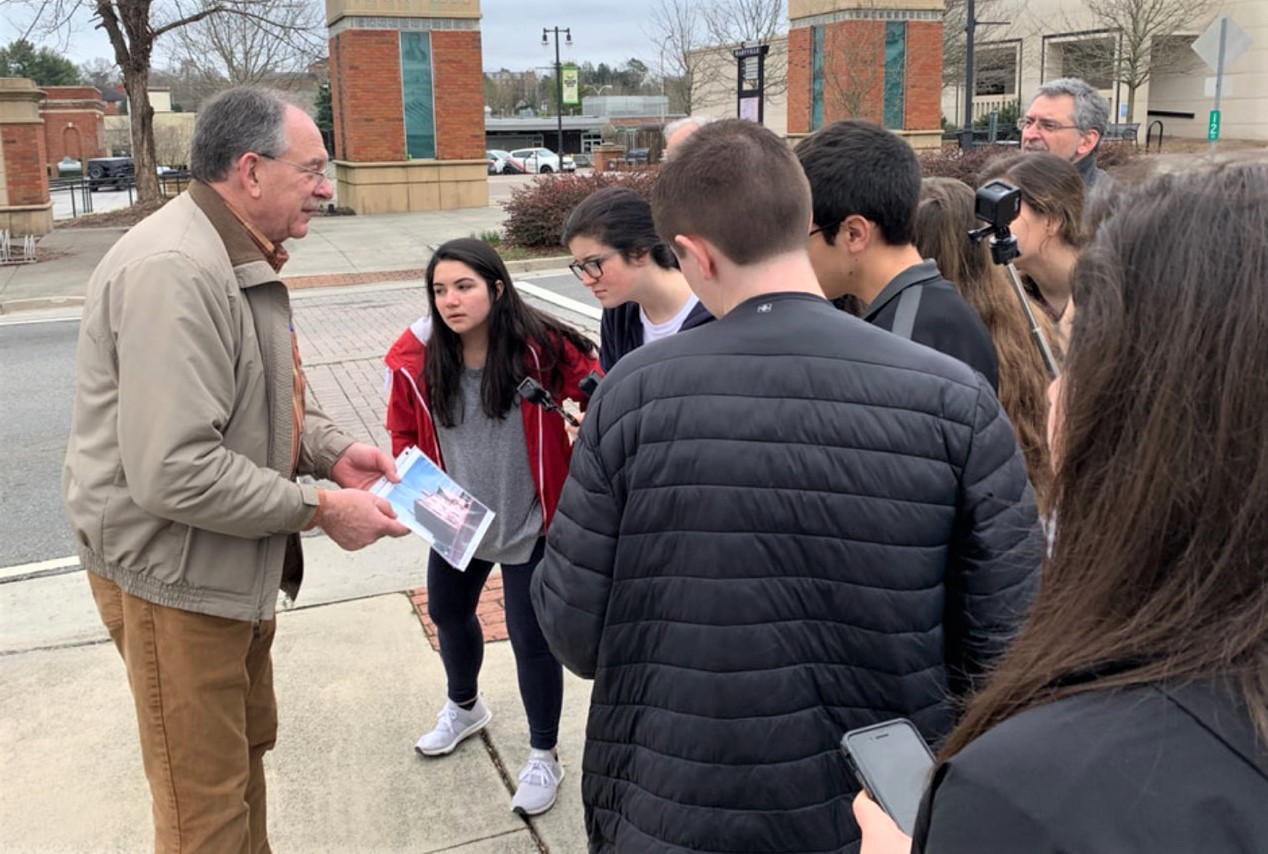
Synthesis
Practices from the arts and history are two examples in which disciplinary knowledge from the humanities made addressing a particular problem possible. Looking across a range of STEM endeavors—from professional practice to educational interventions with youth—we sometimes see seamless integration of STEM and humanities catalyzed by the identification of a problem to be solved first. This starting point is, of course, different from deciding what practices or orientations learners need to know and then attempting to retrofit real-world problems to those targeted practices.
For Stewart and the Off the Map team, getting people’s attention and changing their minds was of utmost importance. Then, they asked, what familiar practices can we borrow from disciplines to do that work? Looking at his images and figures, I often forgot that the content of Stewart’s visualization was complex scientific phenomena because his graphics were so stunning. In Off the Map the content was historical data made to fit within a more straightforward wireframe, or web format (though no less easy to construct). In this way, disciplinary boundaries blur in describing the outcome. It is in the backward mapping of the process where we see that different ways of looking and working, borrowed from distinct disciplines, added up to a product intended to improve the well-being of its users.
Integrated STEM as Working Across Generations
Just as authentic problems do not adhere to disciplinary boundaries, neither do they segregate by age. School is one of few contexts most of us encounter where age segregation is the norm. Families, libraries, museums, places of work, churches, and most out-of-school time STEM programs consider multi-age learning configurations as an asset (Hatton Yeo and Ohsako 2000). Following this logic, the design of learning environments in and out of schools should work to span generations of learners (e.g., Tzou et al. 2019) so that problems the effort addresses are approached historically as well as innovatively.
How It Looks in Professional Practice
Stewart’s work as a mid-career scientist is to innovate within the drug development process. Yet, at every team meeting a “longer view” on the development process is represented by late-career scientists. These “old-timers [more experienced scientists and external advisors to the company] know what should come next without even looking at it,” Stewart said. This familiarity with the overall process saves Stewart and the company precious time in avoiding common pitfalls and queuing-up acceptable next steps in drug discovery. Stewart also describes “newcomers” as scientists recently coming out of different doctoral programs and being intimately familiar with recent publications and developments from their respective institutions. Newcomers make important connections to other parts of the field so that Stewart’s lab is not operating within a vacuum. (See Lave and Wenger 2002 for an extensive analysis of the role of newcomers and old-timers in communities of practice.)
How We Designed for It
I saw similar advantages of intentional generation-spanning in Off the Map. The success of our project hinged upon the integration of retirees in the community. Several high school students involved in the project were interested in representing the changing role of their school in the community (from a Freedman’s Institute to a polytechnic school to a public high school) in the app; old-timers embodied some of these transitions, having been students there decades ago and living through some of the institutional transitions. Though retirees had exceptional historical and professional knowledge from a variety of disciplines, they also had other invaluable and uncommon resources (at least compared to teens, young parents, and working professionals): time and long-standing, far-reaching community connections. Like in Stewart’s lab, old-timers helped the younger generation of innovators (i.e., high school students designing the mobile app) anticipate roadblocks and would then connect students to other people in the area who might be useful in solving an emergent issue. While these interactions were helpful in the moment, several students made lasting relationships with older community members, and reciprocally, retirees described feeling useful to and knowledgeable about the overall objectives of the project. In many ways, these working relationships temporally spanned academic and professional trajectories and contextualized for high school students the objectives of the project. Students heard much about the transformation of participation (Rogoff 1994) of old-timers who were students at their high school, had graduated, gone to college, become successful professionals, and then retired, still contributing and committed to their shared community.
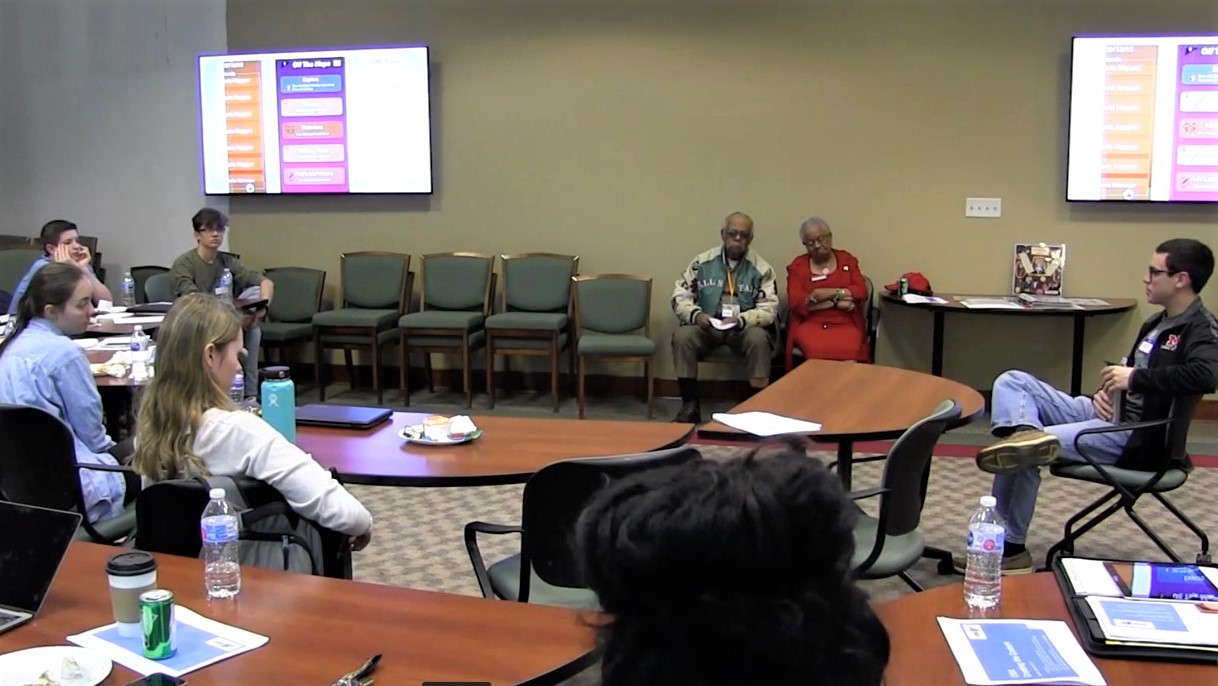
Synthesis
Designing STEM learning environments to connect and integrate knowledge and wisdom from across generations might be considered a form of relational pedagogy (e.g., Herrenkohl et al. 2019); relationships anchor the work and allow learning and teaching to thrive. Importantly, this form of relational pedagogy (i.e., working across generations of expertise) provides a long view on the process and product, collaboratively questing for innovative solutions with an awareness of redundancies, missteps, and potential next steps. At a personal level, learners and teachers—younger and older—grow their networks potentially beyond the life cycle of the collective project. (An example of this network growth is a high school student in Off the Map who contemplated an undergrad degree at the University of Washington because of side conversations with the author about existing programs.) Young people in particular, working with elders, confront a living example of learning, growing, and investing in the community. This version of thriving is perhaps different from other narratives of success young people receive in small towns, such as narratives that focus on upward mobility via moving to the big city and leaving your roots behind.
Integrated STEM as Spanning Anchor Institutions
The third design consideration, related to the intergenerational nature of invited learners (and teachers), is to involve stakeholders and representatives from important anchor institutions revered by the community (e.g., public libraries, local colleges, the mayor’s office, public schools, and places of worship; see Barron et al. 2013). Working across these partnerships is not only necessary to accomplish meaningful work, but also builds a social and potentially physical infrastructure to support future projects where ideas, people, and resources can move more easily (e.g., Penuel 2019; Pinkard 2019).
How It Looks in Professional Practice
Science projects in the professional sector increasingly function across geographically distributed teams, pulling in expertise and assets from around the globe. In Stewart’s workday, the scientific work is distributed globally, resulting in cultural, linguistic, and temporal spreading (McDonough et al. 2001). With work occurring at two major research universities, clinical trials in Europe, and drug chemistry occurring in Southeast Asia, this startup thrives on national and international collaboration, but also the lowest bidder. While this form of spanning “anchor institutions” is not entirely feasible when designing learning environments, young learners should understand that today, scientific collaboration is often a team of global players. In Stewart’s lab, the nature of work does not map onto highly individualized metrics of “success” like tests in school. Are people’s lives improved by the product? If so, the work that Stewart produced contributed to that success, but it is not his alone.
How We Designed for It
The local public library—a kind of crossroads for many, especially rural, communities (Reid and Howard 2016)—housed the bulk of the in-person work for Off the Map. A revered local institution, the library in this nonmetropolitan setting gathers people from far-reaching rural spots in the county, the very young to the very old, and people from various racial and cultural groups that the public schools segregate (i.e., white students make up the vast majority of one of the two high schools in the area). Various community groups borrow space during the week to hold meetings and events. Workspace is dedicated to school-age children for homework help and Wi-Fi hotspots. This public library also affords a robust technical infrastructure with dedicated staff to troubleshoot computer and internet-based issues destined to arise. Given this setup, the public library already spans and brings together other anchor institutions revered by the community. The seed library, podcast, tax consultations, writing workshops, and almost nightly lectures on a host of topics ensure that people from across backgrounds and interest intersect through these library services.
In coming together for Off the Map, team members were exposed to various ways other communities of practice consider and work on a problem. High school students designing the app worked with the town’s GIS specialist to gather geolocated data layers. An intern from the local newspaper worked with software designers to tell the story of the app. Local historians and librarians worked with school teachers to share available resources for building locally based curricula. Professors at the local liberal arts college worked alongside high school teachers to compare instructional practices.
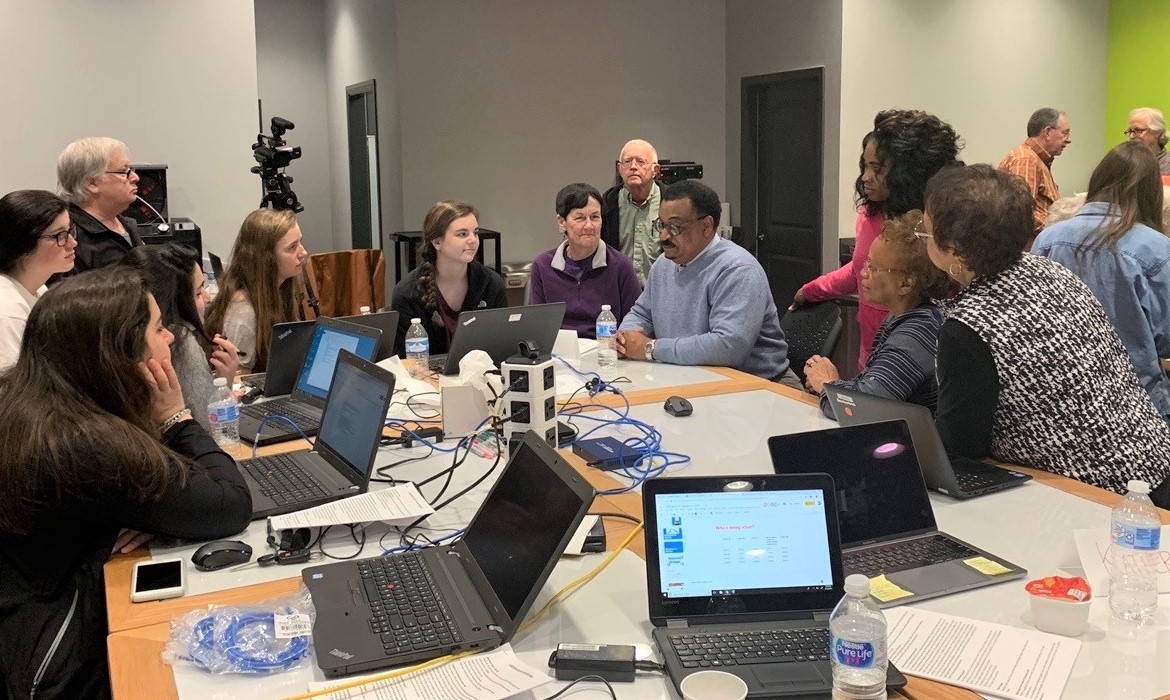
Synthesis
The network of sites connected via Off the Map was much more limited in scope than something like the HIVE Network in New York City (e.g., Ching 2015) or how Stewart’s lab functions internationally. However, spanning anchor institutions in nonmetropolitan and rural settings is an essential part of modeling for young learners the nature of connected and integrated STEM practice (e.g., Bell 2012) that we see in professional settings. Additionally, a foundational component of the Off the Map curriculum was for young people to research through text and artifact-based methods various key institutions in the area and physically visit them with a community elder. In these site visits, both young and older participants saw the familiar in new ways based on people’s questions, reactions, new information, and the mediation of the mobile app (Bell et al. 2019).
Project team members quickly learned that the learning and teaching processes of Off the Map were intensely negotiated and sometimes contested, with different stakeholders at times pulling toward their objectives or relinquishing control (e.g., Barton 2003). Such negotiation is endemic in the cultural, linguistic, and temporal distribution of Stewart’s work in the lab. Like Stewart has learned and continues to practice, young people in Off the Map learned the delicate interactional work of relational attunement (Taylor 2020): how people understand and fine-tune aspects of their work by considering the different perspectives and values of their collaborators. But within this negotiated terrain of knowledge practices, spanning essential anchor institutions created “access to and valued possibilities for participation in practices at a broader scale” (Hall and Jurow 2015, p. 173). The landscape of possibilities—for learning, for work, for participation—expanded even within a small town in the southeastern United States.
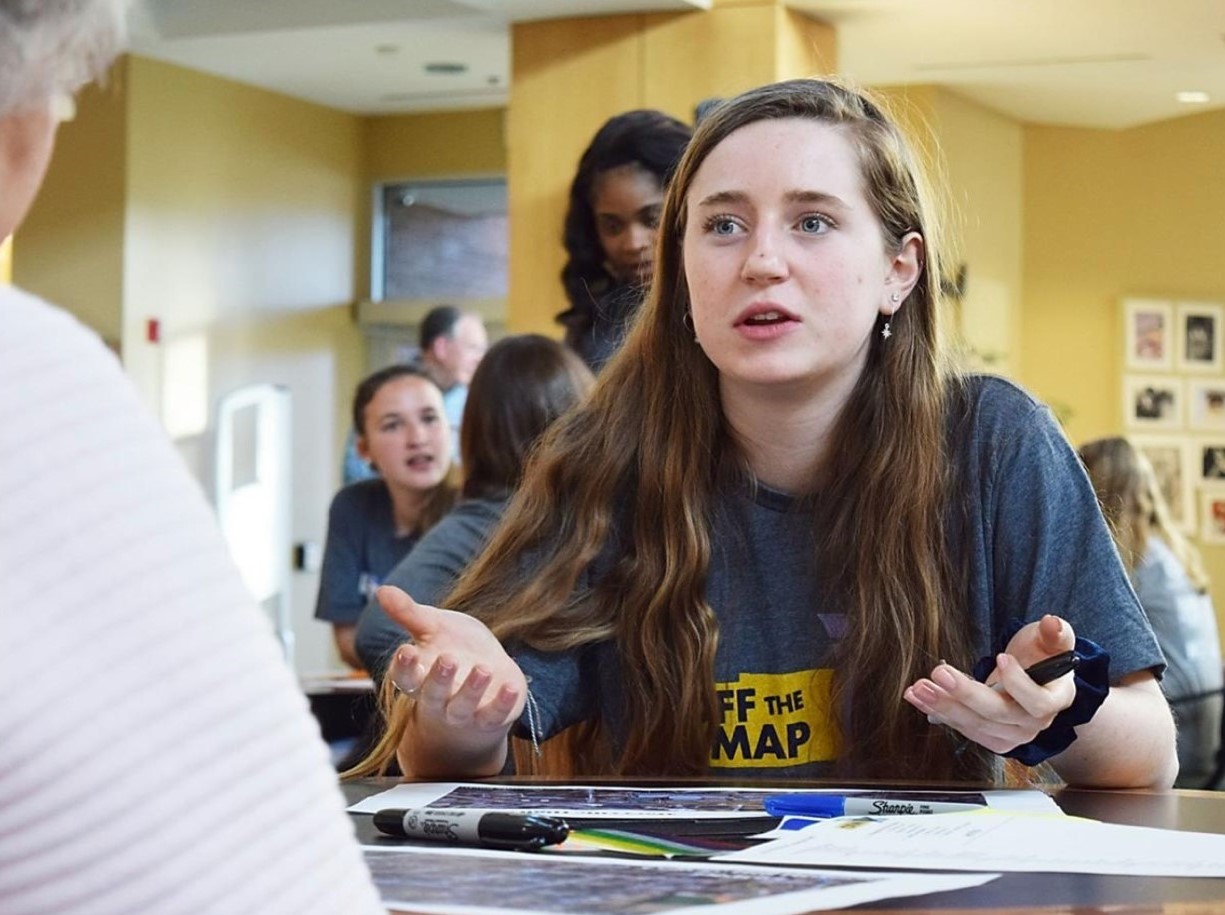
Conclusion
What are current examples of connected STEM learning environments that intentionally advance the moral and social development of people (across the lifespan) alongside scientific innovation? How do we make STEM knowledge production about being and living together better, in more just ways with all forms of life rather than toward the accumulation of capital? Looking at professional practices—and people motivated by moral obligations to humanity—helps educational designers decide what ethical orientations we hope to reproduce and those we want to newly promote for more just, morally driven STEM work. I have offered three commitments for connected STEM, though there are more, radical notions of how our learning environments should prioritize upending structures of inequality, racial injustice, and human supremacy (e.g., Bang 2020). How would this re-prioritization shift Dr. Stewart’s lab work or the app development in Off the Map? Working across difference is a starting point and then making movements toward knowledgeably enacting equitable change is the objective.
Acknowledgments
Off the Map was supported in part by the Spencer Foundation Postdoctoral Fellowship.
Katie Headrick Taylor (kht126@uw.edu) is Associate Professor of Learning Sciences & Human Development at the University of Washington - College of Education, Seattle, Washington.
citation: Taylor, K.H. 2022. Commitments for connected STEM: Spanning disciplines, generations, and anchor institutions for humane science. Connected Science Learning 4 (1). https://www.nsta.org/connected-science-learning/connected-science-learning-january-february-2022/commitments-connected
Citizen Science Equity Inquiry STEM Technology Informal Education



